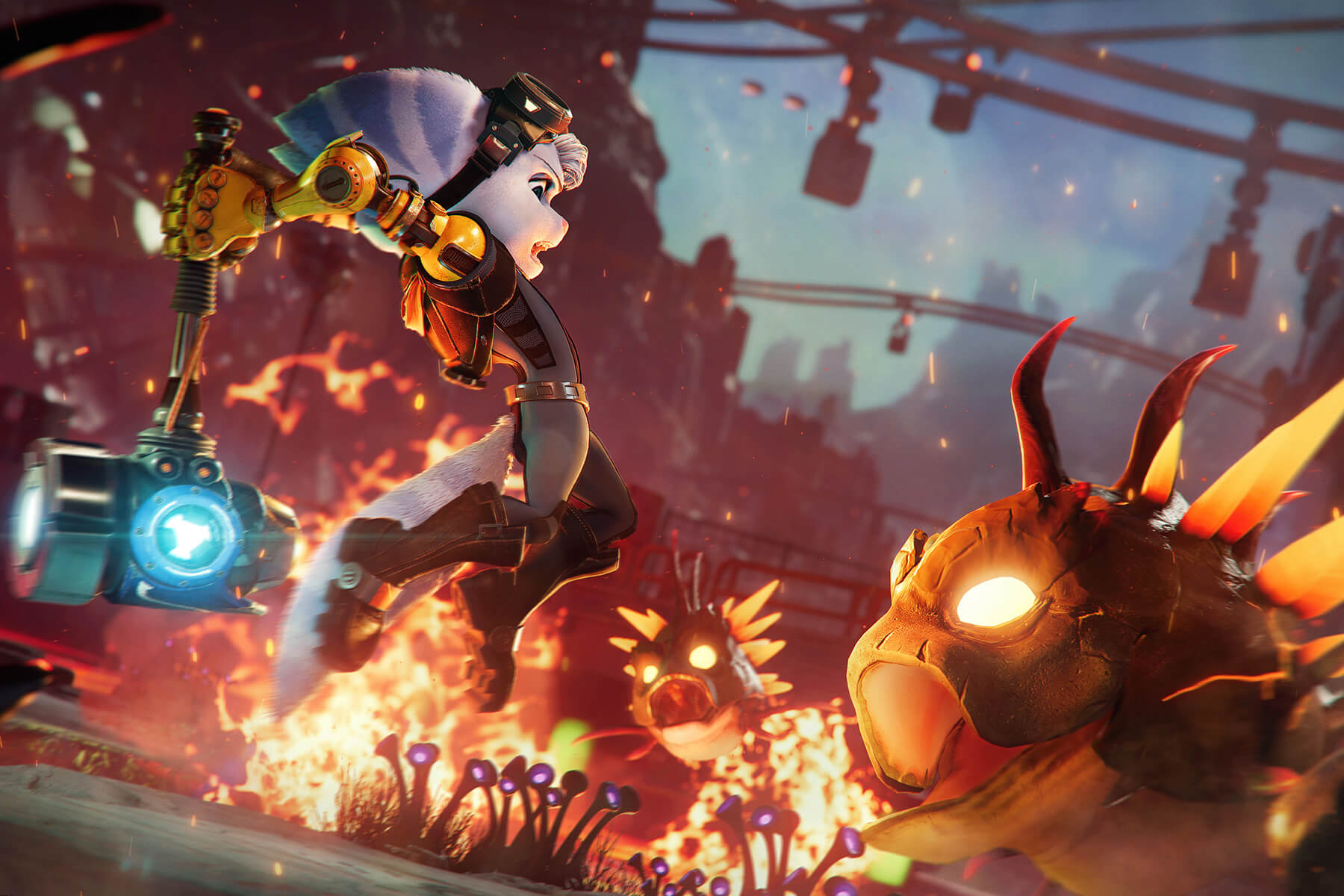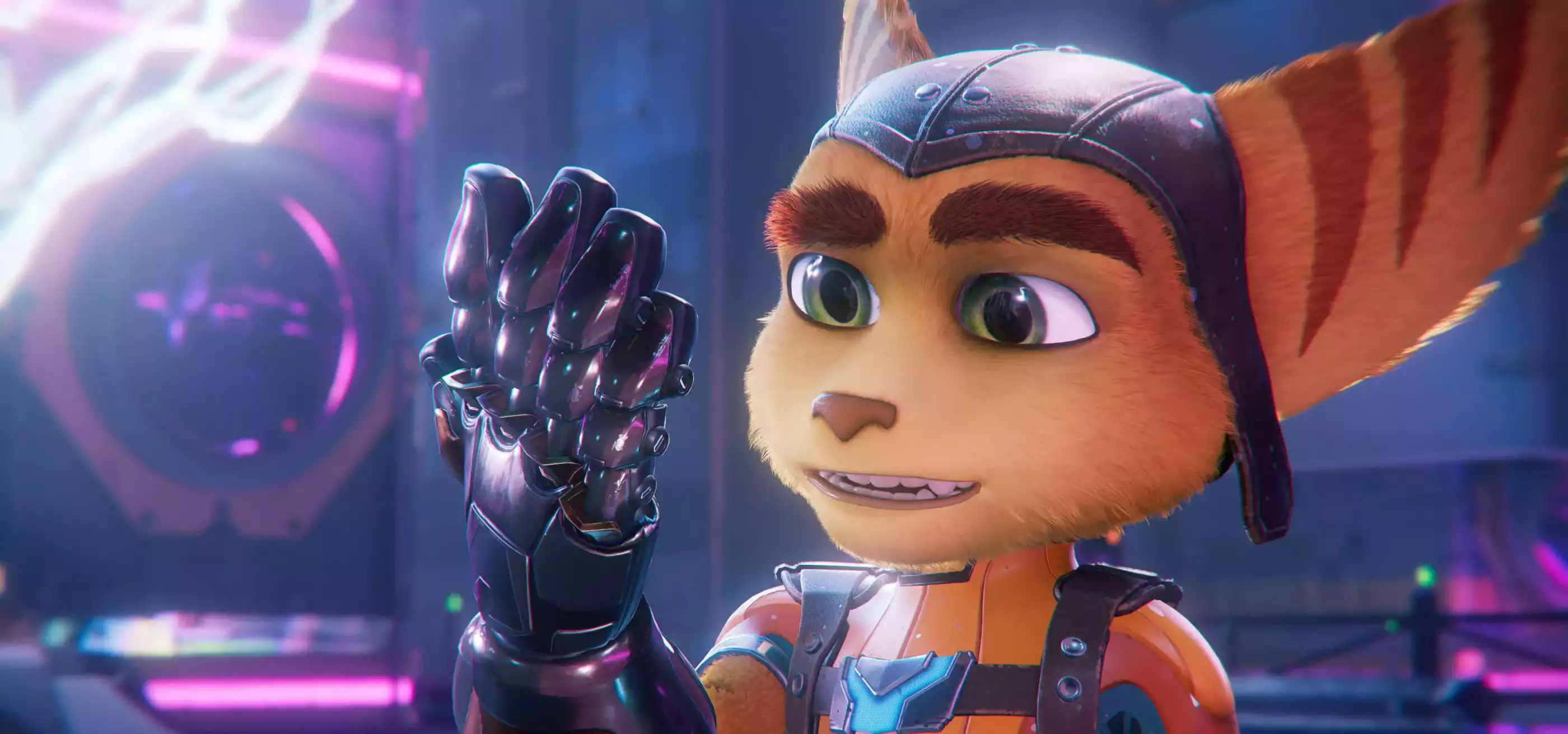When DigiPen MS in Computer Science graduate John Yednock (2012) decided to jump into the game industry, he knew exactly where he wanted land, and what he wanted to do there. “I had been eyeing Insomniac Games since high school — it was the number one company I wanted to work for,” Yednock says. “I loved the Ratchet & Clank games on PS2. It’s one of the reasons I seriously considered working in the games industry.” As fate would have it, during his DigiPen studies, Yednock landed a gameplay programming internship at Insomniac, where he set to work on the four-player cooperative Ratchet & Clank: All 4 One. And that was just the beginning.
Now a senior gameplay programmer at Insomniac’s North Carolina studio, Yednock has worked on an impressive five Ratchet & Clank titles, as well as other VR games, during his nine-year career there. “Honestly it’s been a dream come true,” Yednock says. “Getting the chance to work on one Ratchet & Clank title as an intern was an awesome experience. Working on five has been more amazing than I ever could have imagined.”

His latest credit in the series, Ratchet & Clank: Rift Apart, is also one of the franchise’s best, according to Yednock. “A lot of passion went into this game, and it shows,” he says.
From the get go, Ratchet & Clank: Rift Apart was planned as a showcase for the capabilities of the brand new PlayStation 5 console. “We really wanted to push the game to be a true next-gen experience,” Yednock says. “From early on, we knew we could harness the power of the PS5 to accomplish super fast load times, so that opened a lot of creative freedom for the design. Also, with the increased power and ray-tracing capabilities, we definitely looked to push the visual quality beyond anything we had previously created.”
Yednock quickly found himself exploring the console’s new possibilities, working on the initial in-engine implementation of the DualSense controller’s unique adaptive triggers. In Ratchet & Clank: Rift Apart, the pressure players put on the trigger changes how various weapons feel and operate. A half squeeze, for example, produces a single shot or locks onto a target, whereas a full squeeze bursts off multiple rounds at once. “It was exciting to be one of the first teams to create a game that made extensive use of this new technology,” Yednock says of the feature, one that’s been specifically highlighted in the majority of the game’s glowing reviews.
Beyond working on the triggers, Yednock devoted most his time in development to the game’s hero character programming. Players who enjoy how fluid Rift Apart’s movement feels have, in part, Yednock to thank. “I focused a lot on traversal mechanics like sprinting, hoverbooting, and grinding,” Yednock says. Dialing in the traversal system’s fun factor meant lots of collaborating with Insomniac designers to implement various prototypes. “Those often expose some tunable values that can be tweaked to test how different values feel,” Yednock says. “With more experience with this franchise, I’ve gained a better understanding of what feels fun to the player.”

Critics and players seem to agree that Ratchet & Clank: Rift Apart is, indeed, very fun — with Engadget calling it the “first genuine masterpiece” for the PlayStation 5. “Seeing how the fans have reacted to the game and how much people are enjoying it brings joy to the entire team,” Yednock says. “I’m proud that we worked together to deliver a game that is one of the best in the Ratchet & Clank franchise, and that we did this while working through a global pandemic.”
Insomniac was forced to switch to a remote work model when COVID-19 hit the United States last year, a challenge for which Yednock says the studio was actually well prepared. “We already had an infrastructure in place to collaborate between our California and North Carolina offices,” Yednock says. “With patience and huge help from the IT department, we were able to settle into our new working environment and function very efficiently.”
Whether completing work in a pandemic or overcoming a development challenge, Yednock says his DigiPen studies helped him learn how to approach roadblocks. “When a problem is proving to be very difficult and working on it for hours leads to little or no progress, taking a break can help clear your mind and give you a fresh perspective when you return,” Yednock says. Another strategy Yednock picked up from working with DigiPen mentors and student game team partners — simply talking it out. “It can be very helpful to just talk through the problem and your attempted solutions with someone else,” Yednock says. “Going over the details of the problem can help you or the other person catch a mistake or a piece of information you may have previously overlooked.”
